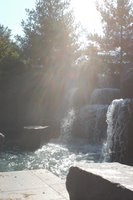For those of you not on the Literary Calls for Papers Mailing List
http://cfp.english.upenn.edu, these upcoming projects may interest you:
Autobiography and the BodyWe are seeking essay abstracts for a proposed anthology of essays on any aspect of the role of the body in autobiography. In recent criticism of autobiography, the body has once again becoming central to discursive constructions of the self. The pervasive influence of the Cartesian duality in the classic American autobiographies by men – such as those of Benjamin Franklin, Henry James, and Henry Adams – is apparent in their emphasis on the life of the mind, while the pronouncements of Paul de Man in the early 1980’s defined the self as inevitably an artificial linguistic construct that once again seemed to make the body disappear. Feminist scholars such as Sidonie Smith, however, have shown how for women biology has long been perceived as destiny, and thus their autobiographies often focus much more on the life of the body and its relation to their emotional lives. In recent years women writers have become the leading practitioners of memoir and autobiography, and the autobiography of disease and disability has become one of its most popular and innovative subgenres. Simultaneously, the significance of the body in life writing has gained increasing attention even among scholars who do not focus specifically on women’s life writing as scholarship of autobiography has begun to explore the science of the brain. In his most recent book Paul John Eakin, long a groundbreaking scholar in the theory of autobiography, has once again taken the lead, reading texts such as Lucy Grealy’s Autobiography of a Face and Robert Murphy’s The Body Silent in light of the most recent debates by neurologists such as Oliver Sacks, neurobiologists like Gerald M. Edelman, and philosophers of mind such as Daniel C. Dennett.
The time is ripe for an essay collection on the significance, or insignificance, of the body in autobiography. Possible subjects include, but certainly are not limited to, classic autobiographies, slave narratives, women’s autobiography, the autobiography of disability and disease, autobiography and neurobiology, or autobiography and the body as racial signifier.
Please submit electronically abstracts of no more than 750 words along with a brief CV to Dr. Christopher Stuart of the University of TN at Chattanooga at <
chris-stuart@utc.edu> by January 1st, 2007. Requests for more information may be sent to the same address.
Fat StudiesCFP for 2007 PCA/ ACA
(deadline November 15, 2006)
Fat Studies is becoming an interdisciplinary, cross-disciplinary field of study that confronts and critiques cultural constraints against notions of “fatness” and “the fat body”; explores fat bodies as they live in, are shaped by, and remake the world; and creates paradigms for the development of fat acceptance or celebration within mass culture.
Proposals in the area of Fat Studies are being accepted for the 2007 PCA /ACA (Popular Culture Association/American Culture Association) National Conference in Boston, MA, (April 4-7 2007; Boston Marriott Copley Place). Papers are welcomed from academics, researchers, intellectuals, activists, and artists, in any field of study, and at any stage in their career.
Topics may include but are not limited to:
·representations of fat people in literature, film, music, nonfiction, and the visual arts
· cross-cultural or global constructions of fatness and fat bodies
· cultural, historical, or philosophical meanings of fat and fat bodies
· portrayals of fat individuals and groups in news, media, magazines
· fatness as a social or political identity
· fat acceptance, activism, and/or pride movements and tactics
· approaches to fat and body image in philosophy, psychology, religion, sociology
· fat children in literature, media, and/or pedagogy
· fat as it intersects with race, ethnicity, class, religion, ability, gender, and/or sexuality
· history and/or critique of diet books and scams
· functions of fatphobia or fat oppression in economic and political systems
By November 15, 2006, please send an abstract of 250 words or a completedpaper to Fat Studies area co-chairs, Stefanie Snider (
ssnider@usc.edu) and Lesleigh Owen (
goddess_les@yahoo.com).
Please include your complete contact information, and a CV and/or 50 word bio, along with anticipated A/V needs.
Completed papers for those accepted will be due to Stefanie Snider by March 1, 2007. Presenters must become members of the Popular Culture Association. Find more information on the conference and organization at
http://www.popularculture.org.






